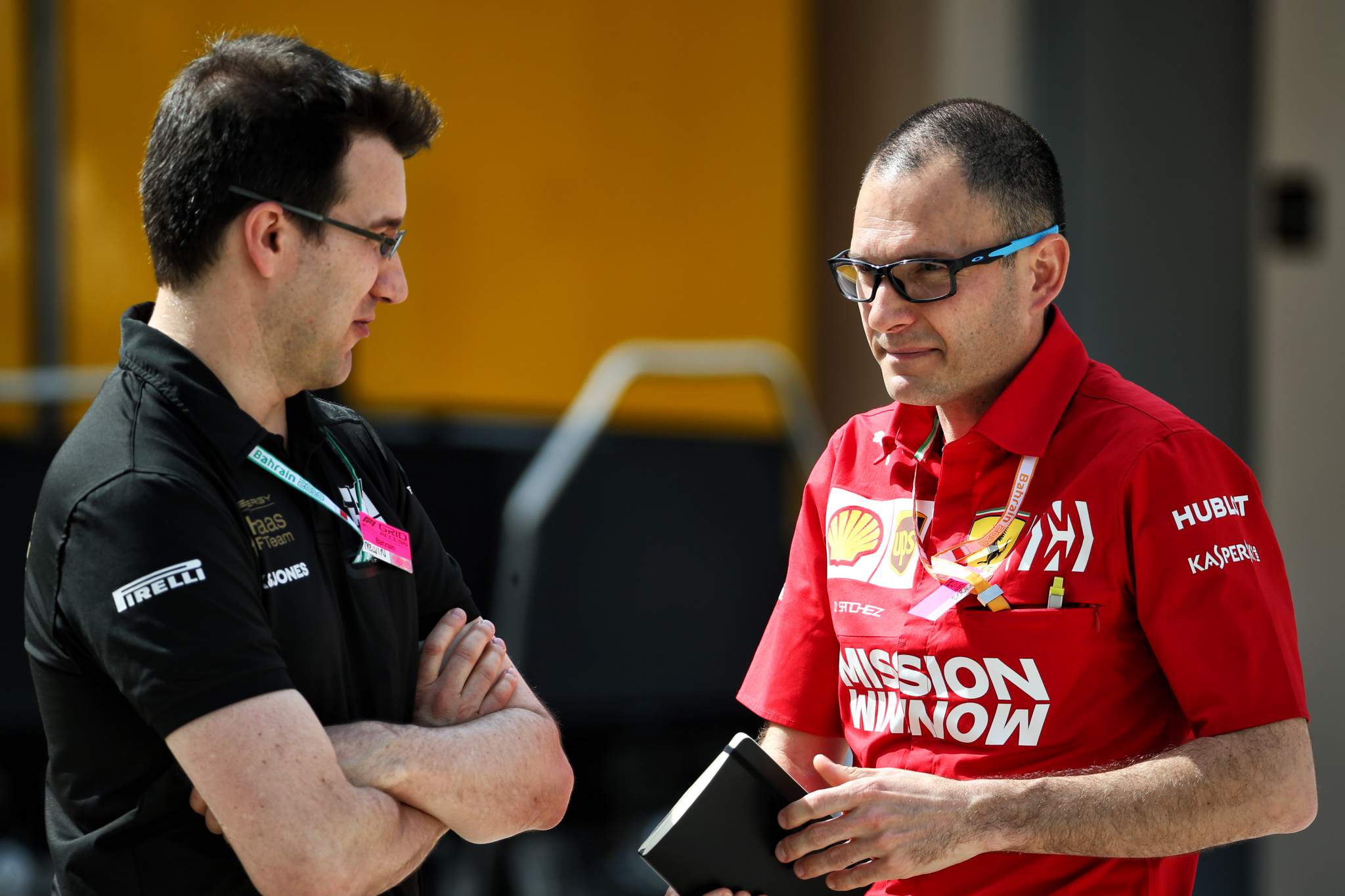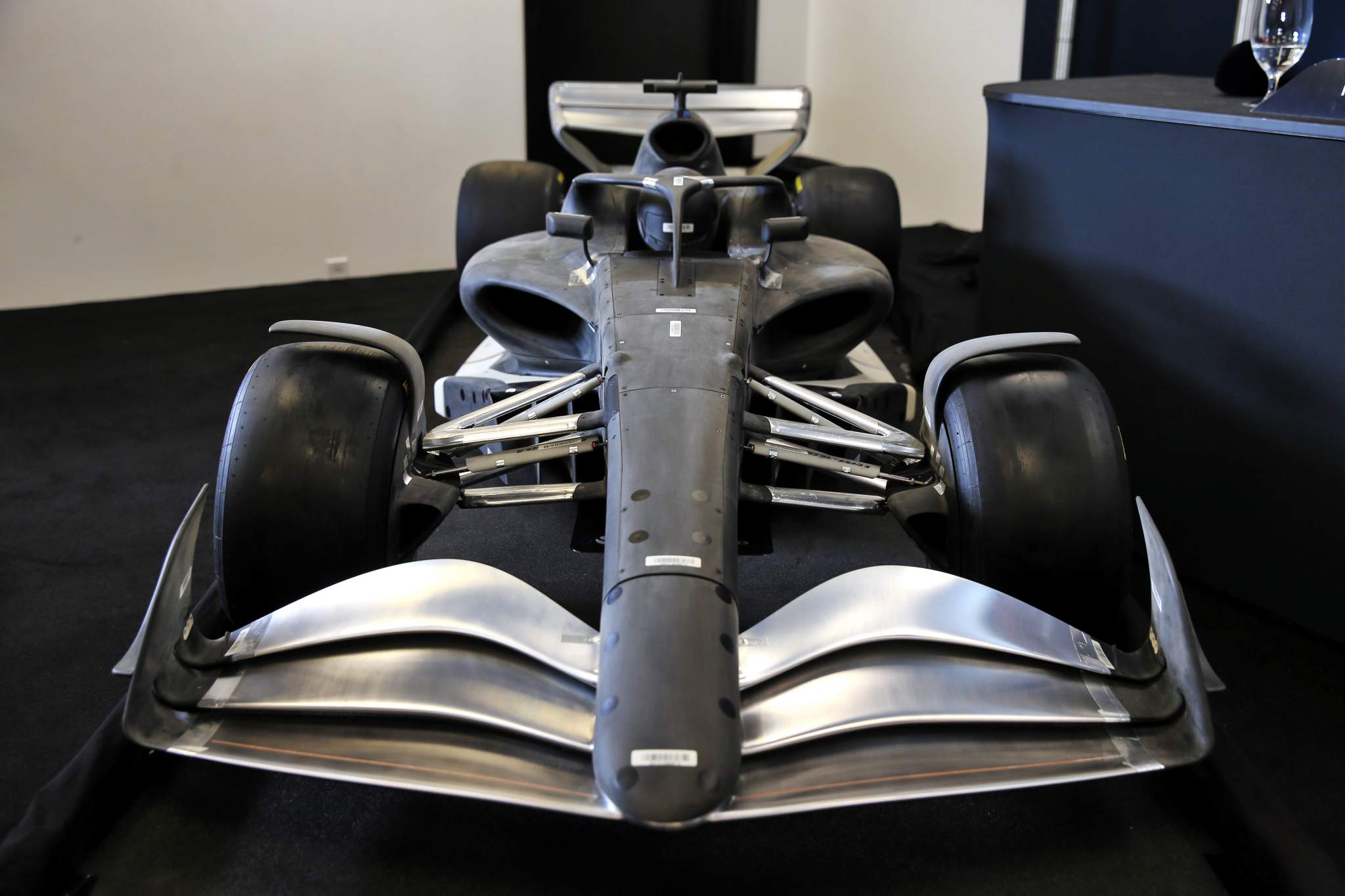David Sanchez’s formal title at Ferrari is chief engineer of performance, a post he has held since January this year. But for the last five years he has been probably the main creative force behind the team’s aero and chassis. He’s a visionary in the best traditions of F1 creative forces and he has a clarity and certainty of that vision beneath an ostensibly quiet and contained manner.
He is very much identified with a landmark car, the 2017 Ferrari SF71H, which went on to become one of the most influential designs in F1 of the next few years. The innovation shown around the sidepod and crash structure treatment was a crucial part of its aerodynamic excellence and was copied by everyone eventually – even Mercedes. It signalled that Ferrari was no longer just a technical follower, but a creative innovator. Yet the man behind this change is still not widely known outside of Italy.
He’s French, began his F1 career as an aerodynamicist at Renault in 2005, spent five years at McLaren before joining Ferrari in 2012 as principal aerodynamicist – but it was his promotion by Sergio Marchionne in the wake of the split with James Allison which gave him his chance to shine.
“The 2017 car was part of what I call the 2016 revolution in Ferrari,” he tells The Race. “A few years coming from McLaren I had pretty strong views about how I should develop the aerodynamics. It wasn’t fully agreed with everyone at the time and there was some friction.”
The turmoil came from a mediocre 2016 car and the breakdown in relationship between technical chief James Allison and boss Marchionne. Allison’s departure gave Sanchez his break and that’s when the vision was given its head.
“Without the budget cap anything which makes the car faster you take it. Now you need to think about what will give the biggest return” :: David Sanchez
“I think I changed the way aero was looked at from concept to performance, the characteristics I felt were the most important. The ’17 car was such a complete step change in how we developed a car at Ferrari. Since then we have had had our challenges and things still need working on because you cannot stand still, but I’m pretty happy now.”
By ‘now’ he’s referencing the way the team has bounced back from the disaster of last year when the sudden loss of around 50 horsepower from what had been expected when the SF1000 was conceived led to certain challenges.
From there to being arguably the third-fastest car on the grid in ’21 is cause for some qualified satisfaction.
“Last year we designed a car we thought was going to be right,” he adds. “Of course it wasn’t. We spent some time finding what was the trouble aerodynamically. A couple of them were obvious.
“Since then, within the restrictions of the homologation regulations we managed to make a large step. One of them was basically the efficiency of the car. We ended up last year with it a bit too high downforce [for the power] and carrying far too much drag. We had to re-centre that. This is just aero development and is fairly straightforward, not really affected by the frozen aspects of the regulations.
“Then for the rest, it was whether you spend the two-token changing at the front of the car or the back. We chose the back revamp and it paid off. If we could have, we’d have revamped the front as well. But what we’ve seen on track for the last few races the car is healthy.
“There is more performance to come. We’re hoping to polish up a few things then we can look at the rest of the year. We are still maturing how we extract the full potential from this car. We’re finding that when we get it in the sweet spot it’s pretty fast. We need to make sure that whichever track we go to, whatever the challenges in the speed range, the various corners, topologies etc., we maintain the car in that sweet spot. That’s where the progress will come from this year.”

Although he’s now a level above the aero department, Sanchez’s philosophy is still embedded in there. What is that philosophy? “You need downforce, that’s obvious and at the moment with these regulations you can create a lot of downforce, but you need to make sure the car can sustain it.
“The aero is getting ever more complex so it’s more prone to break down. Essentially the philosophy is make sure the downforce is very consistent, gives confidence to the driver that it’s not going to bite in any way – and then we should have a pretty solid platform.
“A guy I’m happy to have developed for the last few years has taken my former role. He was an aerodynamicist at Ferrari for quite a while and I’m still working close to him so that whenever he needs I can assist him. In the next few months he can completely take over. It was a very much a transition over the Christmas period.
“After a few months it’s much more settled because the guy knows how I work, what I’m expecting. The department as far as I’m concerned is now a pretty well-oiled machine and everyone there knows how we run the department, how we work. This side of the company, I’m quite relaxed about.”
Sanchez’s current role involves outlining his vision of the car to all the departments, defining targets for each of them, co-ordinating their efforts to give them the car he has envisioned. The radical regulation change coming for next season offers opportunity as well as risk. Opportunity to begin again on a levelled playing field without the legacy deficit to the Mercedes and Red Bull. Risk in losing the thread of the improved performance from the disaster of last year.

Sanchez adds: “Aerodynamically the cars are dramatically different from current ones but fundamentally we are looking for similar things – but achieving it a different way. Everything we learned and developed in the last few years is still very valid.
“You always want more. The budget cap is making us think where you really want to put the priority. A good thing is we’ve been developing in the last few years the necessary tools to do this and so I think we’re in a good place. You have to be pragmatic in how you use resource, you need to be more focused on priorities.
“Without the cap anything which makes the car faster you take it. Now with the cap you need to think about, with the resource you have, what is the top priority for improvement, what will give the biggest return. It also puts a lot more focus on the early phase of the car because next year if you put on a track a car which has a large weakness it’s going to be a pretty uphill battle to recover.”
The original thinking and energy which, almost out of nowhere amid the turmoil of 2016 brought Ferrari arguably the fastest car on the grid in 2017-18, is still embodied in Sanchez. A modern F1 car is never about one person, it’s about many hundreds of them. But at Ferrari, of all places, the galvanising energy of a man with strong ideas and leadership qualities is always important.
Sanchez has both of those. Are there more great Ferraris within his leadership, cars that will stand the comparison not just to the SF70H but the Mercedes and Red Bulls too? Don’t bet against it.


